Planning a trip to Kyoto, Japan, and wondering how many days you should spend in this enchanting city? Well, you’re in the right place! Kyoto is a city that effortlessly blends ancient traditions with modern life, making it a must-visit destination for travelers from around the world. In this travel blog, we’ll help you decide how many days to allocate for your Kyoto adventure and provide you with a perfect itinerary to make the most of your visit. Planning a trip to Kyoto? Check out the best flights.
Table of Contents
Day 1: Arrival and Getting Acquainted
Morning:
- Your Kyoto journey begins as you arrive at Kyoto Station, whether by train, bus, or even by plane if you’ve flown into Kansai International Airport. Kyoto Station itself is a modern architectural marvel worth exploring. It’s a bustling hub with a wide array of shops, restaurants, and even a rooftop garden with panoramic city views.
- After checking into your chosen accommodation, which could be a traditional ryokan, a cozy guesthouse, or a modern hotel, take some time to rest and freshen up.
Afternoon:
- Once you’re ready to start your exploration, head to the historic Gion district, which is just a short bus or taxi ride away from Kyoto Station. Gion is renowned as Kyoto’s geisha district and is known for its traditional wooden machiya houses, cobbled streets, and picturesque canals. It’s a place where old-world charm meets modern elegance.
- Stroll through the enchanting streets of Gion, and you might even be lucky enough to catch a glimpse of a geisha or maiko (apprentice geisha) in their elegant attire as they make their way to appointments. Don’t forget to visit the famous Hanamikoji Street, known for its preserved teahouses and quaint shops.

Evening:
- As the sun begins to set, consider booking a traditional Kaiseki dinner at a local restaurant in Gion or nearby Pontocho Alley. Kaiseki is a multi-course, beautifully presented Japanese meal that often features seasonal ingredients. It’s a true culinary experience that reflects Kyoto’s dedication to gastronomy.
- After dinner, you can take a leisurely evening walk along the Shirakawa Canal, which is illuminated at night, creating a magical atmosphere. It’s a perfect way to conclude your first day in Kyoto and soak in the city’s charm.
Additional Tips:
- If you’re interested in learning more about the geisha culture and history, consider booking a guided walking tour of Gion, which can provide you with fascinating insights into this traditional world.
- Keep in mind that Gion is a place of historical significance and respect, so be mindful of your surroundings, avoid disturbing residents, and refrain from taking photographs of geisha or maiko without their permission.
- Reservations for Kaiseki dinners are recommended, as these establishments often have limited seating and can be quite popular among both locals and tourists. You can ask your accommodation for recommendations and assistance with booking.
- Don’t forget to have some local currency (yen) on hand for small purchases and meals, as not all places in Kyoto accept credit cards, especially in more traditional neighborhoods like Gion.
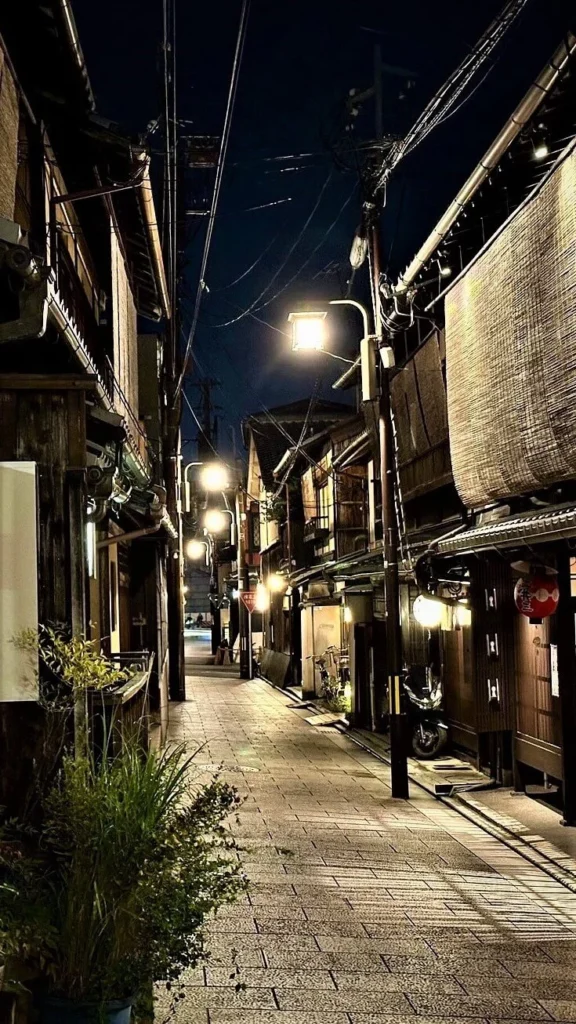
Day 2: Exploring Kyoto’s Temples
Morning:
- Start your day early with a visit to Kinkaku-ji, also known as the Golden Pavilion. This stunning Zen Buddhist temple is one of Kyoto’s most famous landmarks. It’s covered in gold leaf and is reflected beautifully in the tranquil Mirror Pond. Take your time to explore the temple grounds, enjoy the meticulously landscaped gardens, and learn about the history and significance of this architectural gem.
- After exploring Kinkaku-ji, you can have a light snack or refreshment at one of the teahouses nearby, where you can savor matcha (green tea) and Japanese sweets while taking in the serene surroundings.
Lunch:
- Head to a local restaurant or eatery near Kinkaku-ji to enjoy some delicious Kyoto cuisine. You might want to try kaiseki (traditional multi-course meal), yudofu (tofu hot pot), or other local specialties.
Afternoon:
- Your next stop is Ryoan-ji, famous for its Zen rock garden. Spend some time in contemplation as you view the simple yet profound arrangement of 15 rocks in a sea of meticulously raked gravel. Ryoan-ji’s gardens and traditional architecture are incredibly peaceful and offer a glimpse into the Zen philosophy.
- Afterward, make your way to the Arashiyama district, known for its beautiful bamboo grove. As you wander through the towering bamboo stalks, you’ll feel like you’ve stepped into another world. Be sure to explore the nearby Tenryu-ji Temple, a UNESCO World Heritage Site with exquisite gardens.
Evening:
- To end your temple-themed day, head to Fushimi Inari Shrine in the southern part of Kyoto. This iconic shrine is famous for its thousands of bright orange torii gates that lead up to the sacred Mount Inari. It’s a mystical and photogenic place, especially during the twilight hours. You can hike up the hill to explore the shrine’s various sub-shrines and enjoy panoramic views of Kyoto.
- For dinner, you can find a local restaurant or street food vendor in the Fushimi Inari area to enjoy some more Kyoto delicacies.
Additional Tips:
- Kyoto’s temples often have specific opening and closing hours, so plan your visit accordingly. Kinkaku-ji and Ryoan-ji are typically open from early morning to late afternoon.
- Be sure to wear comfortable shoes, as there will be some walking involved, especially at Fushimi Inari Shrine and Arashiyama.
- Consider renting an audio guide or hiring a local guide at some of these temples to gain a deeper understanding of their history, significance, and the spiritual practices associated with them.
- Kyoto is known for its seasonal beauty, so the experience can vary depending on when you visit. Cherry blossoms in spring and colorful foliage in autumn make these temple visits even more breathtaking.
- Keep some cash on hand for temple entrance fees and any small purchases you might want to make during your exploration.
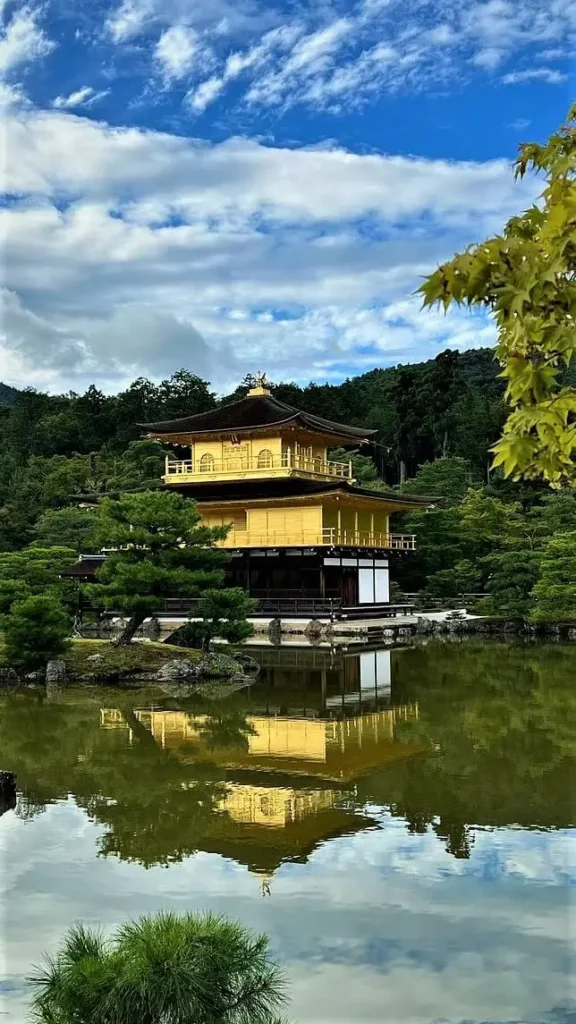
Day 3: Kyoto’s Cultural Heritage
Morning:
- Begin your day with a visit to Nijo Castle. This UNESCO World Heritage Site is known for its stunning architecture, beautiful gardens, and “nightingale floors” that chirp like birds when walked upon. Explore the various buildings, including the Ninomaru Palace, which features exquisite painted screens and historical significance.
- After your visit to Nijo Castle, consider having lunch at a nearby restaurant or café to recharge before your afternoon exploration.
Lunch:
- Savor some Kyoto cuisine for lunch, which could include dishes like kaiseki, yudofu (tofu hot pot), or soba noodles. There are many local eateries around Nijo Castle where you can enjoy these specialties.
Afternoon:
- Next, head to the Higashiyama district, known for its beautifully preserved historic streets and charming atmosphere. Begin your exploration at Kiyomizu-dera Temple, an iconic wooden temple with a large wooden terrace that offers panoramic views of Kyoto. The temple is particularly stunning during cherry blossom season in spring and when the autumn leaves change colors.
- Walk down Sannenzaka and Ninenzaka, traditional cobblestone streets lined with shops selling traditional handicrafts, sweets, and souvenirs. Don’t forget to stop by the Yasaka Pagoda, an iconic five-story pagoda.

Evening:
- As the day turns into evening, consider exploring the historic streets of Gion once again, this time taking in its evening ambiance. The streets are beautifully illuminated, creating a magical atmosphere. You might also want to explore Hanami-koji Street, the heart of Gion’s entertainment district.
- For dinner, you can choose from the many traditional Japanese restaurants in Gion or opt for Kyoto-style kaiseki cuisine to experience the city’s culinary heritage.
Additional Tips:
- Nijo Castle often has guided tours available, which can provide you with more insights into its history and architecture. Check the schedule when you arrive.
- Kiyomizu-dera Temple can get crowded, so it’s a good idea to visit in the early morning or late afternoon to avoid the crowds. The view from the terrace is particularly enchanting as the sun sets.
- Higashiyama is a great place to shop for souvenirs and traditional Japanese crafts. Consider picking up some local pottery, silk goods, or sweets.
- Evening is an ideal time for strolls through Kyoto’s historic districts. The illuminated streets and the geisha’s presence make it a unique and romantic experience.
- Keep in mind that Kyoto is a city where traditional customs are still highly respected. Be polite, respectful, and mindful of local etiquette, especially in historic areas like Higashiyama and Gion.
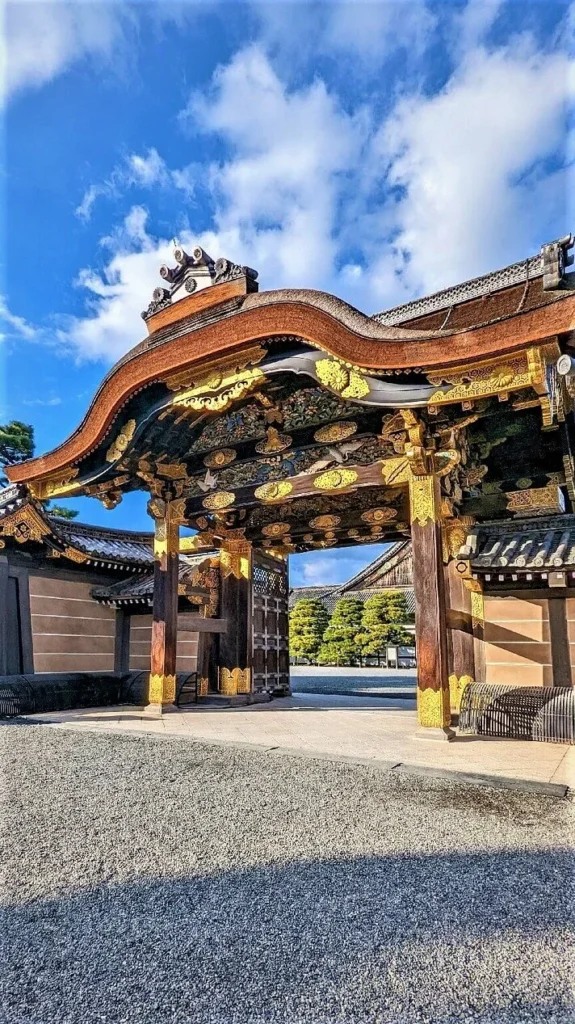
Day 4: Day Trip to Nara
Morning:
- Start your day early by taking a train from Kyoto Station to Nara, which is approximately a 45-minute ride. Upon arriving at Nara Station, you’ll be greeted by a city known for its deep historical significance.
- The first stop on your Nara day trip should be Nara Park, a sprawling park home to over a thousand friendly, free-roaming deer. These sacred deer are considered national treasures and are protected by the city. You can purchase deer crackers (shika senbei) from local vendors to feed them. Interacting with the deer is a unique and heartwarming experience.
- Within Nara Park, visit the Todai-ji Temple, one of Japan’s most important Buddhist temples. It houses the Daibutsu (Great Buddha), a colossal bronze statue that is one of the largest of its kind in the world. The temple itself is a UNESCO World Heritage Site and showcases remarkable architecture and artistry.
Lunch:
- Explore the nearby Nara-machi district for lunch, where you can find local restaurants serving traditional Nara cuisine. Try some local specialties like kakinoha sushi (sushi wrapped in persimmon leaves) or Nara ramen.
Afternoon:
- After lunch, continue your exploration by visiting the Kasuga Taisha Shrine, famous for its lantern-lined paths and enchanting forested setting. The shrine is known for its thousands of stone lanterns and bronze lanterns, which create a magical atmosphere.
- You can also explore Naramachi, a historic district with well-preserved merchant houses and narrow streets that offer a glimpse into Nara’s past.
- If time allows, consider visiting other nearby attractions such as Kofuku-ji Temple or the Nara National Museum to further immerse yourself in Nara’s history and culture.
Evening:
- In the late afternoon, return to Kyoto, where you can enjoy dinner at a local restaurant or explore more of Kyoto’s vibrant nightlife options. You might want to revisit Gion or try another neighborhood, like Pontocho Alley, which is known for its charming bars and restaurants.
Additional Tips:
- Be sure to purchase a round-trip ticket for your train journey to Nara at Kyoto Station. Trains between Kyoto and Nara are frequent and convenient.
- While the deer in Nara Park are generally friendly, it’s important to treat them with respect and follow local guidelines for interacting with them. Feeding them with the provided deer crackers is a popular activity, but do so with care.
- Nara is a compact city, and many of its attractions are within walking distance of each other. Wear comfortable shoes for exploring on foot.
- Nara’s cultural heritage is just as rich as Kyoto’s, so take your time to appreciate the historical sites and their significance.
- If you have extra time in Nara, you can explore additional temples and museums, or simply enjoy a leisurely stroll through the city’s charming streets.

Day 5: Kyoto’s Hidden Gems
Morning:
- Start your day by visiting Kiyomizu-dera Temple, but this time, aim to arrive early in the morning to beat the crowds. Kiyomizu-dera is one of Kyoto’s most iconic temples and offers a fantastic panoramic view of the city from its wooden terrace. During the early hours, you can experience a more peaceful and serene atmosphere.
- After enjoying the views, explore the temple’s beautiful grounds and the Jishu Shrine, dedicated to the deity of love and matchmaking. There’s a famous love stone in the shrine where, according to tradition, if you can walk from one stone to the other with your eyes closed, you’ll find true love.
Lunch:
- Nearby, you can find several traditional teahouses and restaurants that offer a delightful lunch experience. Consider trying matcha (green tea) and traditional Japanese sweets in a teahouse to immerse yourself in Kyoto’s tea culture.
Afternoon:
- Head to the less-visited but equally enchanting Gio-ji Moss Temple. This hidden gem is known for its serene moss garden, small thatched-roof hut, and bamboo grove. It’s a place of quiet contemplation and tranquility.
- Afterward, visit Otagi Nenbutsu-ji Temple, located in the Arashiyama district. This temple is unique for its hundreds of whimsical and charming stone statues, each carved with a different expression. It’s a place that radiates a sense of joy and playfulness.
Evening:
- In the evening, you can explore the vibrant and bustling Nishiki Market in central Kyoto. This market is often referred to as “Kyoto’s Kitchen” and is known for its wide variety of local and seasonal foods, snacks, and ingredients. It’s a fantastic place to sample street food and discover Kyoto’s culinary treasures.
- As the sun sets, take a leisurely walk along the Higashiyama district’s beautiful streets, illuminated by traditional lanterns. This area is home to numerous small shops and boutiques where you can find unique souvenirs and traditional crafts.
Additional Tips:
- Kiyomizu-dera Temple is especially beautiful during cherry blossom season in spring and when the autumn leaves change colors in the fall. Check the local foliage forecast to plan your visit accordingly.
- Gio-ji Temple and Otagi Nenbutsu-ji Temple are less crowded than some of the more famous temples in Kyoto, allowing you to enjoy a more intimate and serene experience. Take your time to appreciate the details and the peaceful ambiance of these hidden gems.
- Nishiki Market is a culinary paradise, so come hungry and be prepared to try a variety of local snacks and dishes. Don’t miss out on trying some fresh seafood, pickles, and Kyoto-style sweets.
- The Higashiyama district is a wonderful place for an evening stroll, and the illuminated streets create a magical atmosphere. It’s a great opportunity for some night photography and to capture the charm of Kyoto after dark.
- Take your time to explore the quaint shops and boutiques in Higashiyama, where you might find unique handmade crafts, traditional Japanese clothing, and local artisanal products.
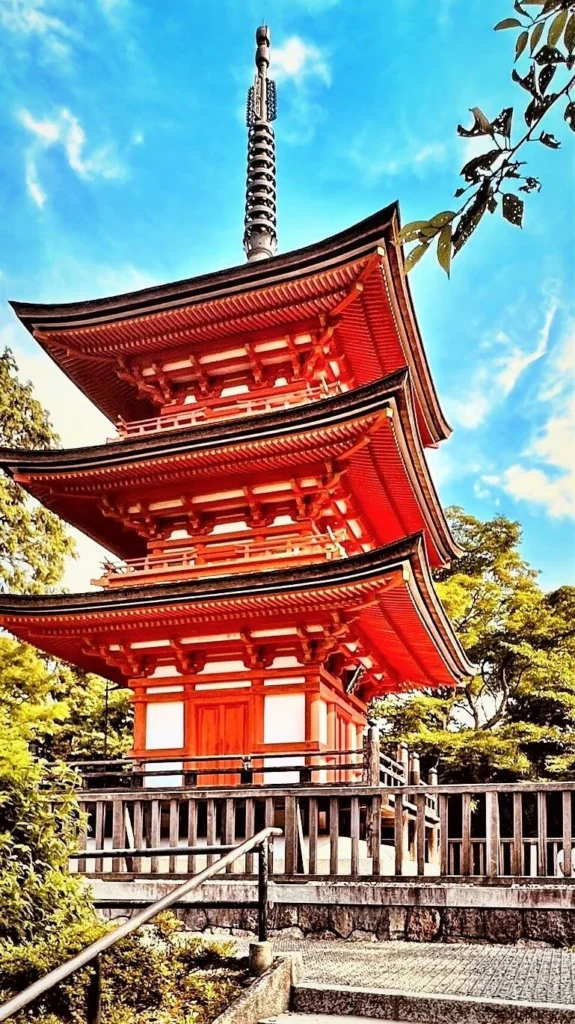
Day 6: Day Trip to Hiroshima
Morning:
- Start your day early by taking a Shinkansen (bullet train) from Kyoto Station to Hiroshima Station. The journey takes approximately two to two and a half hours, offering you beautiful views of the Japanese countryside along the way.
- Upon arriving at Hiroshima Station, you’ll likely want to store your luggage in lockers or at the station’s baggage storage service so you can explore the city unencumbered.
- Your first destination in Hiroshima is the Hiroshima Peace Memorial Park. This somber and historically significant park was created to commemorate the victims of the atomic bomb that was dropped on the city in 1945. The park is home to the Peace Memorial Museum, which provides a comprehensive and emotionally impactful account of the atomic bombing and its aftermath.
- Stroll through the park’s beautifully landscaped grounds and visit the Atomic Bomb Dome (Genbaku Dome), which is the preserved remains of a building that was near the epicenter of the blast. It stands as a symbol of peace and a UNESCO World Heritage Site.
Lunch:
- You can find various dining options in the vicinity of the Peace Memorial Park. Consider trying Hiroshima’s famous okonomiyaki, a savory pancake-like dish cooked on a griddle and customized with your choice of ingredients.

Afternoon:
- After visiting the Peace Memorial Park and Museum, take a ferry to Miyajima Island, which is often considered one of Japan’s most scenic spots. The ferry ride across Hiroshima Bay is a short but picturesque journey.
- Once on Miyajima Island, you’ll be greeted by the iconic Itsukushima Shrine, known for its stunning torii gate that appears to float on water during high tide. Explore the shrine, its grounds, and the charming streets of the island. Don’t miss the opportunity to meet the friendly Miyajima deer, similar to those in Nara.
- If time allows, consider taking a short hike up Mount Misen for panoramic views of the island and the Seto Inland Sea. Alternatively, you can take a cable car or ropeway to the summit.
Evening:
- Return to Hiroshima by ferry and train in the late afternoon or early evening. Depending on your timing, you may have a chance to explore Hiroshima’s nightlife or dine in the city.
- Before leaving Hiroshima, you might want to try Hiroshima-style okonomiyaki, which is slightly different from the one you had on Miyajima Island. This local variation includes layers of ingredients, creating a delicious and hearty meal.
Additional Tips:
- The Hiroshima Peace Memorial Park and Museum offer a profound and moving experience. Allocate enough time to fully explore the exhibits and read the personal stories of survivors and victims.
- When visiting the Peace Memorial Park, consider folding a paper crane and leaving it as a symbol of peace at the Children’s Peace Monument, inspired by the story of Sadako Sasaki, a young girl who developed leukemia due to radiation exposure and believed that folding 1,000 paper cranes would grant her a wish for recovery.
- The ferry ride to Miyajima Island offers beautiful views of the floating torii gate. Be sure to check the ferry schedule to plan your departure and return accordingly.
- While on Miyajima Island, sample some local seafood, especially the famous grilled oysters, as the island is known for its fresh and delicious seafood dishes.

Day 7: Farewell to Kyoto
Morning:
- Start your last day in Kyoto by visiting the beautiful Ginkaku-ji, also known as the Silver Pavilion. While Kinkaku-ji (Golden Pavilion) gets more attention, Ginkaku-ji is a serene and contemplative spot with a lovely Zen garden. Take a leisurely walk through the meticulously landscaped grounds and enjoy the tranquil atmosphere.
- After exploring Ginkaku-ji, you can have a light breakfast at a nearby café or bakery, enjoying some coffee and pastries.
Lunch:
- For your final Kyoto meal, indulge in one more taste of local cuisine. You might want to have a bowl of ramen at a cozy noodle shop, enjoy a bento box filled with delicious Japanese dishes, or try another Kyoto specialty that you haven’t sampled yet.
Afternoon:
- Spend your last afternoon in Kyoto visiting the Nishiki Market, often called “Kyoto’s Kitchen.” This bustling market is a culinary paradise, with stalls selling a wide variety of fresh produce, seafood, street food, traditional sweets, and Kyoto specialties. It’s an excellent place to pick up some edible souvenirs to bring home.
- If you’re interested in traditional crafts, you can explore the Kyoto Handicraft Center, which is located near the Nishiki Market. Here, you can find a wide range of handmade goods, including ceramics, textiles, lacquerware, and more.
- As you stroll through the market and the nearby shopping streets, you’ll have the opportunity to do some last-minute shopping for gifts and mementos.
Evening:
- As the sun begins to set on your last day in Kyoto, take a relaxing walk along the banks of the Hozugawa River. The peaceful riverside setting is a great place for reflection and enjoying the tranquility of the city.
- For your farewell dinner, consider revisiting one of your favorite restaurants or trying a new dining experience. Kyoto offers a wide range of culinary options, from traditional to modern and international cuisine.
Additional Tips:
- Remember to collect any last-minute souvenirs or gifts you’d like to take home, whether they are food items from the Nishiki Market or handmade crafts from local shops.
- The Hozugawa River area is particularly beautiful during sunset, with the soft glow of lanterns along the riverbanks. It’s a serene way to bid farewell to Kyoto.
- Depending on your departure plans, you can return to your accommodation to collect your luggage and head to the station or airport. Be sure to allow enough time for your journey, especially if you have an early departure the next day.
- As you say goodbye to Kyoto, take a moment to reflect on the incredible experiences and memories you’ve made during your trip. Kyoto’s rich history, culture, and natural beauty make it a city that leaves a lasting impression on all who visit.
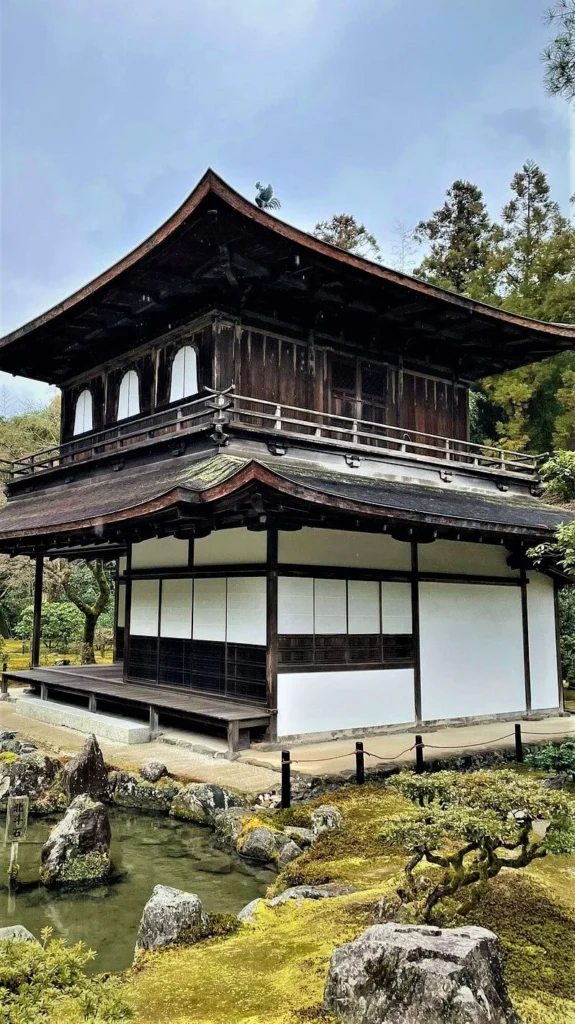
How Many Days in Kyoto: Conclusion
So, how many days should you spend in Kyoto? Ideally, a week allows you to experience the city’s rich history, stunning temples, and delicious cuisine while also taking a couple of day trips to nearby attractions. Of course, you can adjust this itinerary based on your interests and the time you have available. Kyoto is a place where every corner reveals a new facet of Japanese culture, so take your time and savor every moment of this remarkable city. Travel with the best travel insurance. Happy travels!

Check out the other blogs.
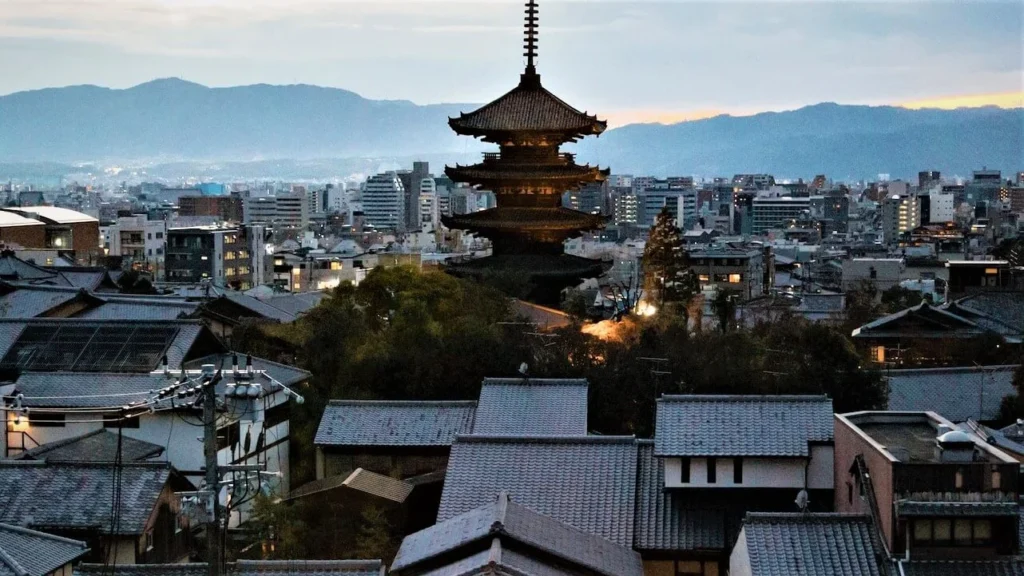
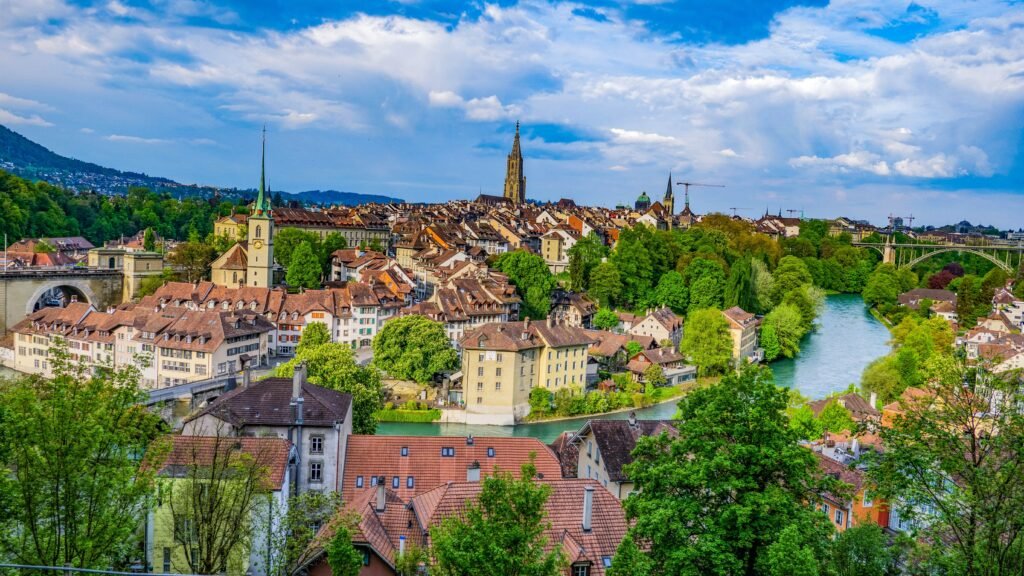
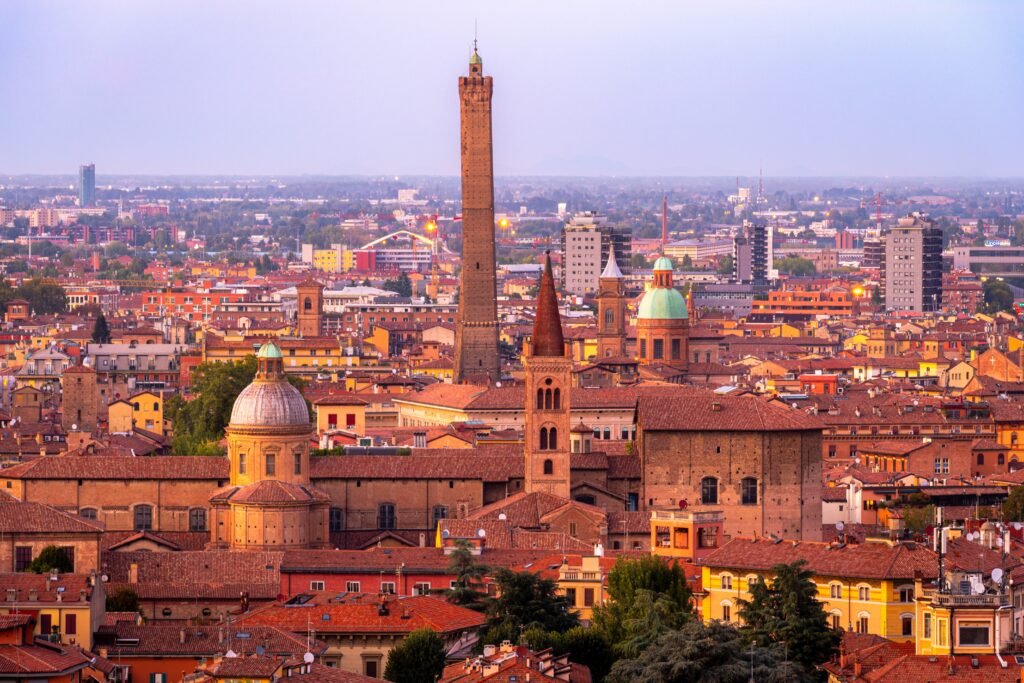
Pingback: The 5 Best Destinations In November For Travel